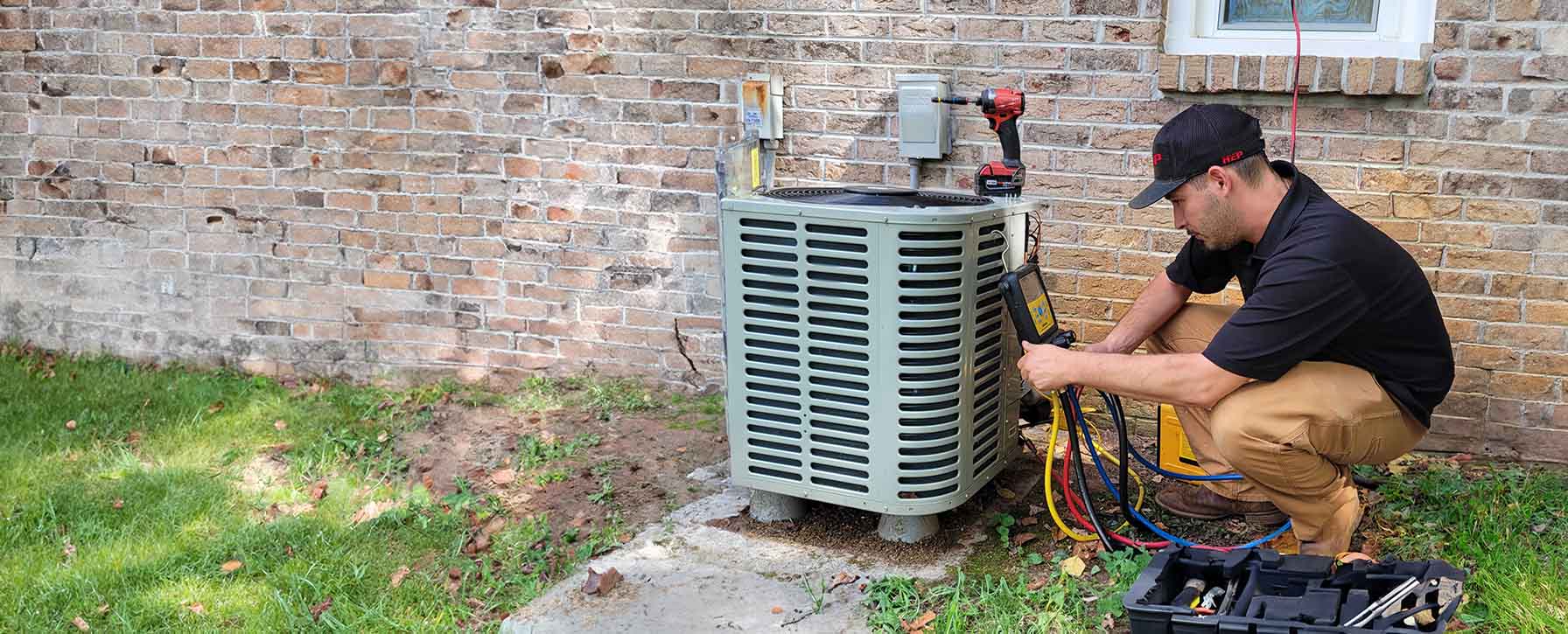

Excess Humidity
Your trusted partner for professional home services. Quality workmanship, guaranteed satisfaction.




- HEP
- Excess Humidity
Excess Humidity | Dehumidifier Installation | Heating and Air Conditioning | Fayetteville
Feel the Fayetteville difference when you partner with HEP’s Excess Humidity Heating & Air Conditioning team. Our certified technicians assess every corner of your home, pinpointing moisture hot-spots and balancing indoor air for year-round comfort. From musty crawl spaces to fogged-up windows, we tackle the root of the problem with precision tools and trusted brands, so you can breathe easier, protect your belongings, and extend the life of your HVAC system.
When you’re ready for a seamless dehumidifier installation, we arrive on time, respect your space, and fine-tune each unit for peak efficiency. You’ll notice the results instantly: drier air, lower energy bills, and a healthier living environment backed by HEP’s iron-clad satisfaction guarantee. Schedule your free evaluation today and discover why Fayetteville homeowners count on us to keep humidity—and hassles—under control.
FAQs
Why is excess humidity a common issue in Fayetteville homes?
Fayetteville sits in North Carolina’s Piedmont region, which experiences long, hot summers and frequent thunderstorms. Moist Gulf and Atlantic air masses keep outdoor relative humidity high for much of the year. When that moisture infiltrates a home, it can create sticky indoor air, encourage mold growth, warp wood floors, and make your HVAC system work harder. A whole-home dehumidifier removes the excess moisture before it spreads through the ductwork, protecting both your comfort and your property.
How does a whole-home dehumidifier integrate with my existing heating and air-conditioning system?
During installation, the dehumidifier is plumbed directly into your supply and/or return ductwork—usually near the air handler. A dedicated drain line routes the collected condensate to a floor drain or condensate pump. The unit is wired to the HVAC control board or a separate humidistat so it can cycle independently of the air conditioner. This configuration lets the dehumidifier pull moist air from the ducts, dry it, and send it back into the airstream without over-cooling the space or relying on window units.
What size dehumidifier does my home need?
Sizing is based on square footage, typical indoor moisture load, infiltration rates, and how airtight your home is. Fayetteville’s climate generally calls for units rated between 70 and 120 pints per day for a 2,000- to 3,500-sq-ft house. Our technicians perform a Manual J load calculation and measure indoor RH levels to choose a model that can maintain 45–50 percent relative humidity without excessive cycling. An undersized unit will run continuously, while an oversized model may short-cycle and leave pockets of humid air.
Will installing a dehumidifier raise my energy bills?
Most homeowners see little to no net increase—and many report lower summer cooling costs. By wringing moisture from the air, a dehumidifier allows you to raise the thermostat 2–3 °F while feeling just as comfortable. Your air conditioner no longer has to run extra long cycles solely to remove humidity, which translates to less electricity usage. High-efficiency units draw roughly the same power as a window A/C, but their indirect energy savings often offset this consumption.
How long does professional installation take, and what should I expect?
A typical whole-home dehumidifier installation in Fayetteville takes 3–5 hours. Our crew will: 1) perform a pre-installation inspection and humidity reading; 2) choose the optimal location near the air handler or in a crawl space; 3) cut access points in the ductwork and attach insulated flex duct to the dehumidifier’s inlet and outlet; 4) run a dedicated condensate drain line; 5) wire the unit to the HVAC control board or humidistat; and 6) test for proper airflow and condensation removal. We’ll leave the work area clean and walk you through operating instructions before we go.
What maintenance does a whole-home dehumidifier require after installation?
Routine upkeep is simple: replace or wash the air filter every 3–6 months (more often during peak summer), clear the condensate line annually, and schedule a professional inspection once a year. During the service visit we’ll check the evaporator coil for dust, verify refrigerant pressures, clean the blower wheel, and calibrate the humidistat. Keeping the system clean ensures optimal moisture removal, quieter operation, and longer equipment life.